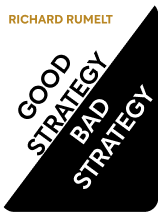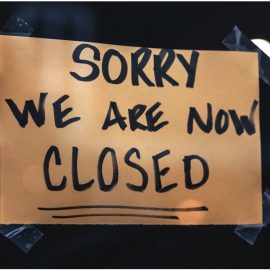

This article is an excerpt from the Shortform book guide to "Good Strategy Bad Strategy" by Richard Rumelt. Shortform has the world's best summaries and analyses of books you should be reading.
Like this article? Sign up for a free trial here .
Are you looking for Good Strategy, Bad Strategy quotes by Richard Rumelt? What are some of the most noteworthy passages worth revisiting?
Richard Rumelt is one of the world’s foremost thinkers on strategy, having guided organizations ranging from small, entrepreneurial start-ups to large, multinational conglomerates, as well as several governments and the U.S. Department of Defense. In Good Strategy Bad Strategy, he lays out the essential components of good strategy and the faulty thinking behind bad strategy.
The following Good Strategy, Bad Strategy quotes highlight his key points.
Good Strategy, Bad Strategy: Quotes and Passages
According to Rumelt, a good business strategy is essentially the effective application of strength against weakness; strength applied either to your own organization’s weakness, to fix it, or to your rival’s weakness, to give you a competitive edge. Good strategy recognizes the true nature of challenges and finds ways to overcome them. Bad strategy leaves you blind to your organization’s challenges and chases unattainable goals without a workable plan.
Below are some of the most noteworthy Good Strategy, Bad Strategy quotes by Richard Rumelt:
“The kernel of a strategy contains three elements: a diagnosis, a guiding policy, and coherent action.”
According to Rumelt, at the core of every good strategy lies a basic underlying structure that unites thought and action called the “kernel.” The kernel has three elements:
- Diagnosis: a definition of the challenge and the most critical aspect of it. Sometimes different people will have different views on what the correct diagnosis of a problem is. A leader’s challenge is to recognize this and to look for a better diagnosis when needed. For example, when IBM faced difficulties in the early 1990s, many said the company was too integrated and advised that it break itself up and specialize in something more narrowly-focused. The company’s CEO, though, diagnosed the problem not as too much integration but as not enough: a lack of internal coordination between teams. Solving that problem allowed the company to regain dominance as an integrated provider of customer solutions.
- Guiding policy: a clearly outlined approach to cope with the challenge identified by the diagnosis. A guiding policy draws upon an organization’s sources of advantage and focuses a company’s efforts toward targeted objectives that meet the challenge. For example, Wells Fargo’s corporate vision aims to satisfy all of its customers’ financial needs, and it supports this ambitious goal with a guiding policy of cross-selling.
- Action plan: a set of actions that work with each other to accomplish the guiding policy. An action plan coordinates a variety of operations to carry out the guiding policy. It defines resources, policies, and movements that support one another. For example, a company with a simple and clear competitive advantage like, say, being a low-cost retailer, will have interrelated policies affecting sales, marketing, distribution, and design that will mutually support each other in order to keep prices low.
“Good strategy works by focusing energy and resources on one, or a very few, pivotal objectives whose accomplishment will lead to a cascade of favorable outcomes.”
Rumelt reinforces that a good strategy focuses on one specific and narrowly defined goal. In the same way that a lever focuses force onto a single, pivotal point, a good strategy focuses mental energy, resources, and actions onto one crucial objective that causes other objectives to fall into line. In the same way that knocking loose one particular keystone can cause a giant arch to fall, leverage applies pressure to one specific area that will have an outsized effect on other areas. Finding that pivotal area is the trick to forming a good strategy.
A real-life example of this is when Bill Gates developed an operating system for IBM in 1980 but negotiated the rights to sell the software to third parties afterward. This aspect of his contract gave him the leverage he used to propel Microsoft to success.
“Bad strategy is long on goals and short on policy or action. It assumes that goals are all you need. It puts forward strategic objectives that are incoherent and, sometimes, totally impracticable. It uses high-sounding words and phrases to hide these failings.”
In Rumelt’s view, a bad strategy is one that’s hyperfocused on goals yet short on action. He defines four elements of a misguided strategy:
- Fluff: Bad strategy relies on unnecessarily grandiose phrasing and vocabulary to create an illusion of expertise.
- Failure to identify the challenge: Bad strategy does not properly define the specific challenge the organization faces. When you don’t explicitly name the problem, you can’t properly address it.
- Conflation of goals with strategy: Bad strategy focuses on profit or performance goals instead of methods to overcome challenges.
- Misguided strategic objectives: Bad strategy tries to focus on too many objectives. It also chooses unrealistically ambitious objectives but does not provide useful guidance on how to achieve them.

———End of Preview———
Like what you just read? Read the rest of the world's best book summary and analysis of Richard Rumelt's "Good Strategy Bad Strategy" at Shortform .
Here's what you'll find in our full Good Strategy Bad Strategy summary :
- The essential components of good strategy and the faulty thinking behind bad strategy
- Specific and measurable techniques for designing a focused strategy for success
- How to overcome challenges and gain a competitive edge






